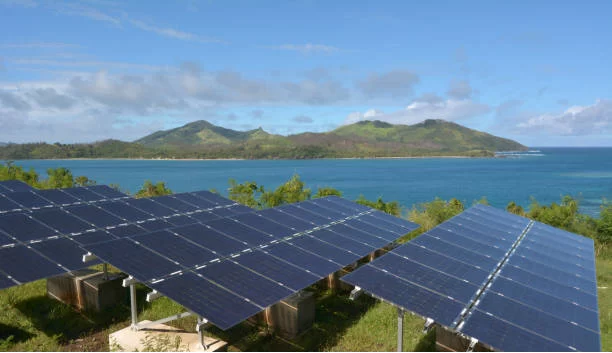Exploring Island Microgrids: Key to Solving Energy Challenges in Remote Islands
In the vast expanse of the ocean, numerous islands are scattered like brilliant pearls. However, these islands have long faced significant challenges in terms of electricity supply. Due to factors such as remote geographical locations and complex environmental conditions, traditional methods of power transmission often fail to meet their stable electricity demands. In recent years, the emergence of island microgrid technology has provided new perspectives and effective solutions to address this issue.
China boasts a multitude of islands, with 6961 islands larger than 500 square meters. Securing electricity on these islands is crucial for various activities including human habitation, sovereignty assertion, and safeguarding strategic positions. However, the stability of electricity supply in remote islands has been a persistent issue affecting crucial sectors such as military operations, maritime activities, and communication.
After years of effort and practical experience, China’s microgrid technology has successfully transitioned from “laboratory technology” to “island application,” achieving breakthrough progress. A path tailored to China’s island characteristics has gradually been explored. For example, Nanji Island in Zhejiang utilizes a hybrid system combining wind power, solar energy, diesel generation, and battery storage, ensuring stable power supply while achieving low carbon emissions. Similarly, the microgrid renovation project on Chenuo Island in Jiangsu has successfully met the stable electricity demands of military facilities, communication equipment, desalination systems, and daily appliances.

These success stories demonstrate China’s ability to transition microgrid technology from the laboratory to practical deployment. State Grid Corporation of China’s Zhejiang Power Company, Jiangsu Power Company, and Guangxi Power Grid Corporation have accumulated valuable experience in microgrid construction for China’s marine islands through extensive research investments.
However, challenges remain in the development of microgrid technology. Firstly, there is a lack of market-driven operational mechanisms, with initial investments heavily reliant on project funding, lacking cost-effective models aligned with market rules, thus hindering the commercialization and scale-up development of distributed power sources and supporting equipment. Secondly, the industry’s top-level design remains incomplete, with industrial standards systems still in their infancy. Many detailed and operational technical specifications have yet to be clearly defined, limiting the full release of market potential and further technological advancement. Additionally, microgrids are widely dispersed, with high labor costs for later-stage operation and maintenance, placing greater demands on battery reliability, power electronics equipment, and communication methods.
Despite these challenges, the future prospects of island microgrids remain promising.
- From a policy support perspective, with increasing emphasis on marine resource development and marine rights protection, governments are expected to further increase investment and support for island microgrid construction. This will provide a better policy environment and financial guarantee for the research, application, and promotion of microgrid technology.
- In terms of technological innovation, advancements in energy storage technology, smart control systems, and power electronics will continuously enhance the performance and efficiency of microgrids. For instance, more efficient energy storage devices can better balance the intermittency and variability of distributed power sources, while smart control systems can achieve more precise energy management and optimized scheduling.
- Market demand will also drive the development of island microgrids. With the economic development of islands, especially those of strategic significance or abundant tourist resources, the demand for stable, reliable, and high-quality electricity will continue to grow. Microgrids can meet these diverse electricity demands, providing strong support for their development.
- Furthermore, the development of island microgrids will contribute to optimizing energy structures and sustainable development. By fully utilizing renewable energy sources such as wind and solar power, reducing reliance on traditional fossil fuels, and lowering carbon emissions, a green and low-carbon energy supply model can be achieved.
- In the future, island microgrids are expected to be widely applied and promoted on more islands. They can not only solve energy supply issues in remote islands, improve power reliability and stability, but also bring numerous benefits to the development of islands in terms of economic growth, ecological conservation, and national defense security. Moreover, China’s accumulated experience and technological advancements in island microgrid development will provide valuable references and insights for addressing similar issues in other regions worldwide, further enhancing China’s international influence in this field.
To ensure the successful development of island microgrids, efforts are needed to accelerate their technological application and promotion from a national strategic perspective, provide more research support to relevant enterprises, leverage successful experiences from private enterprises to facilitate marketization of microgrids, comprehensively inventory energy data along coastal islands to provide crucial foundations for construction, and vigorously promote the widespread application of microgrids on thousands of isolated islands through market-oriented means.
In conclusion, as an effective solution to the energy challenges of remote islands, island microgrids possess vast development potential and broad application prospects. With concerted efforts from all parties, they will inject new vitality into the development of China’s islands and maritime enterprises, becoming a crucial support in China’s journey towards becoming a “maritime power.” Through continuous improvement and innovation, island microgrids will undoubtedly play an increasingly important role in the future energy landscape, making positive contributions to humanity’s better utilization of marine resources and achievement of sustainable development goals.
